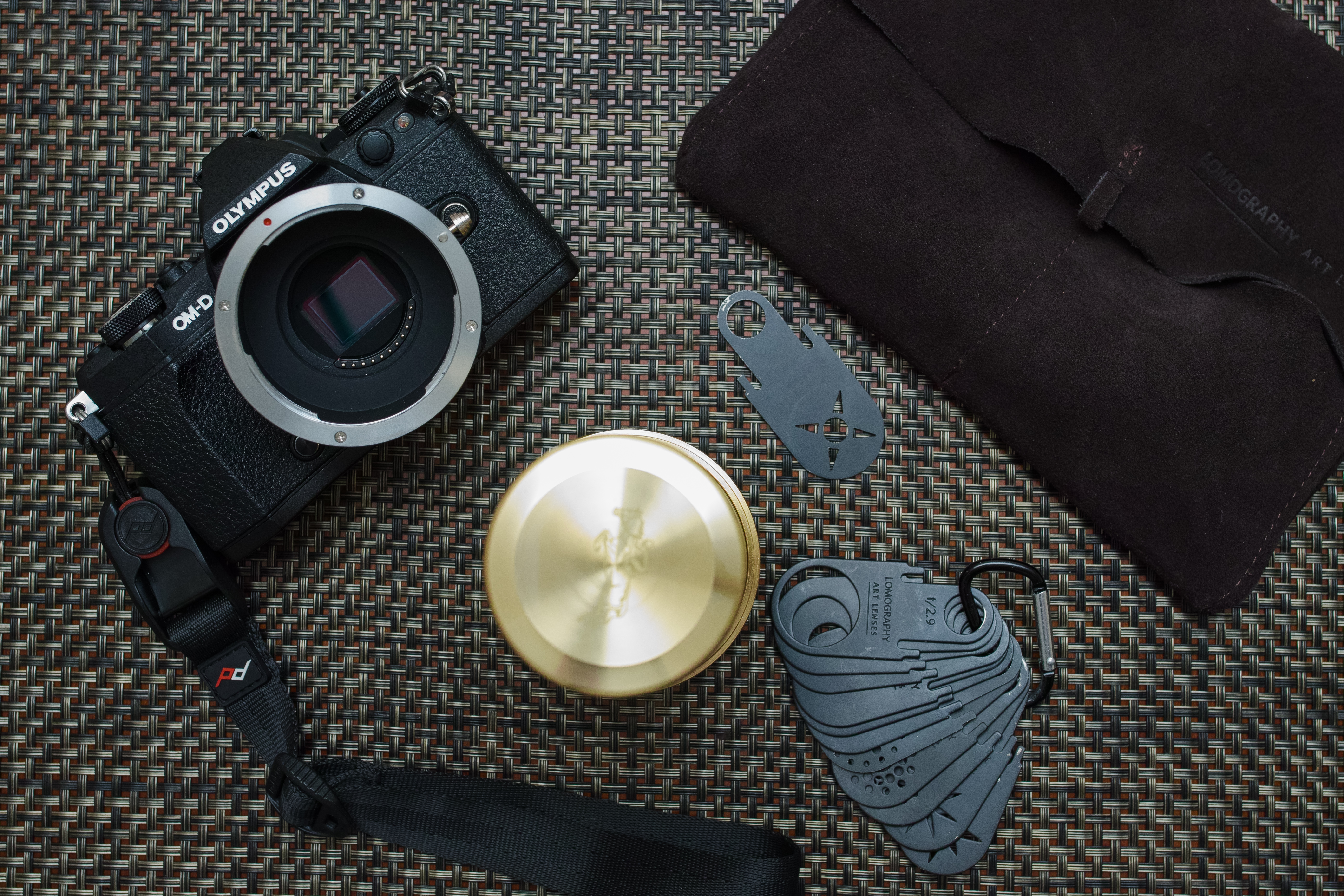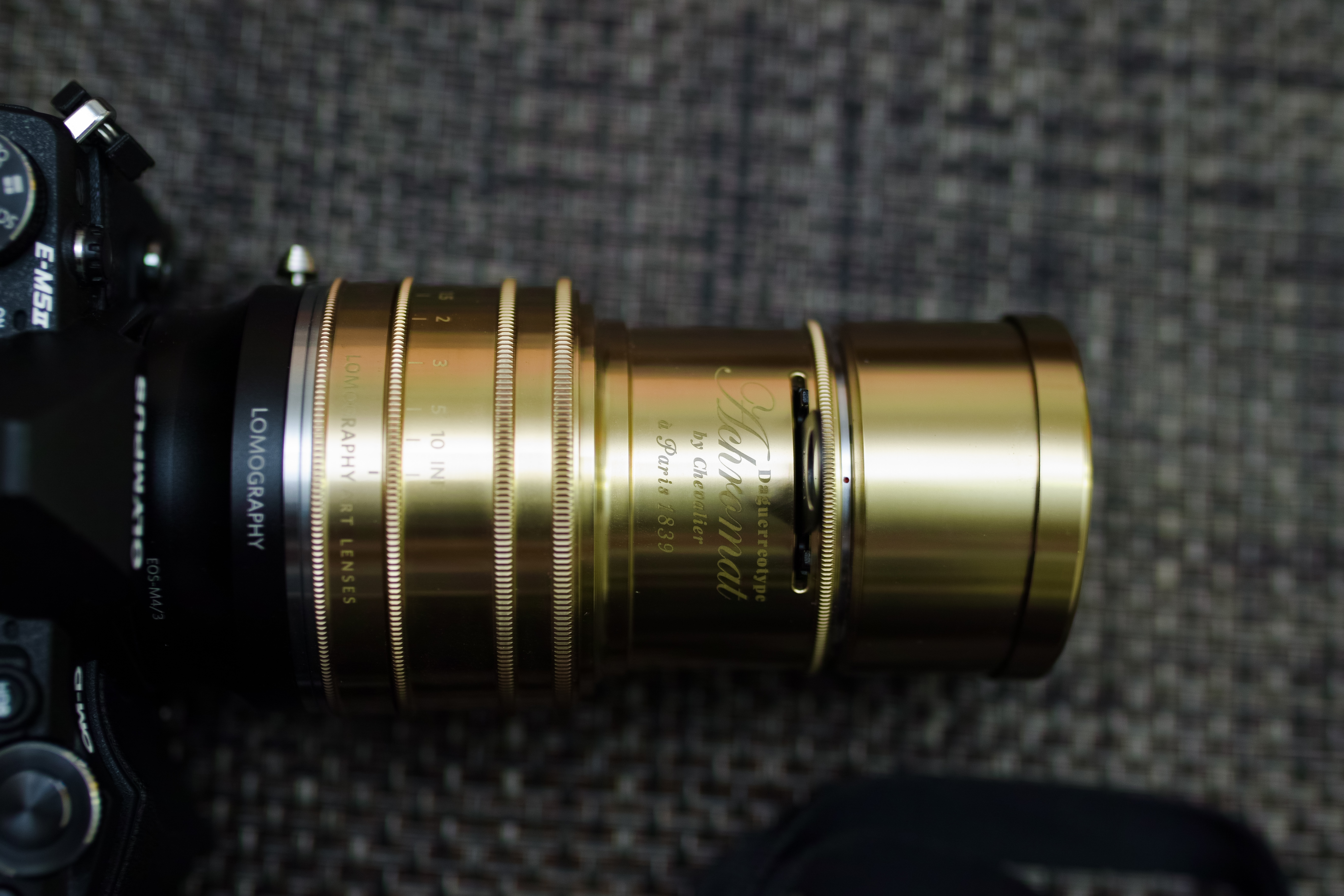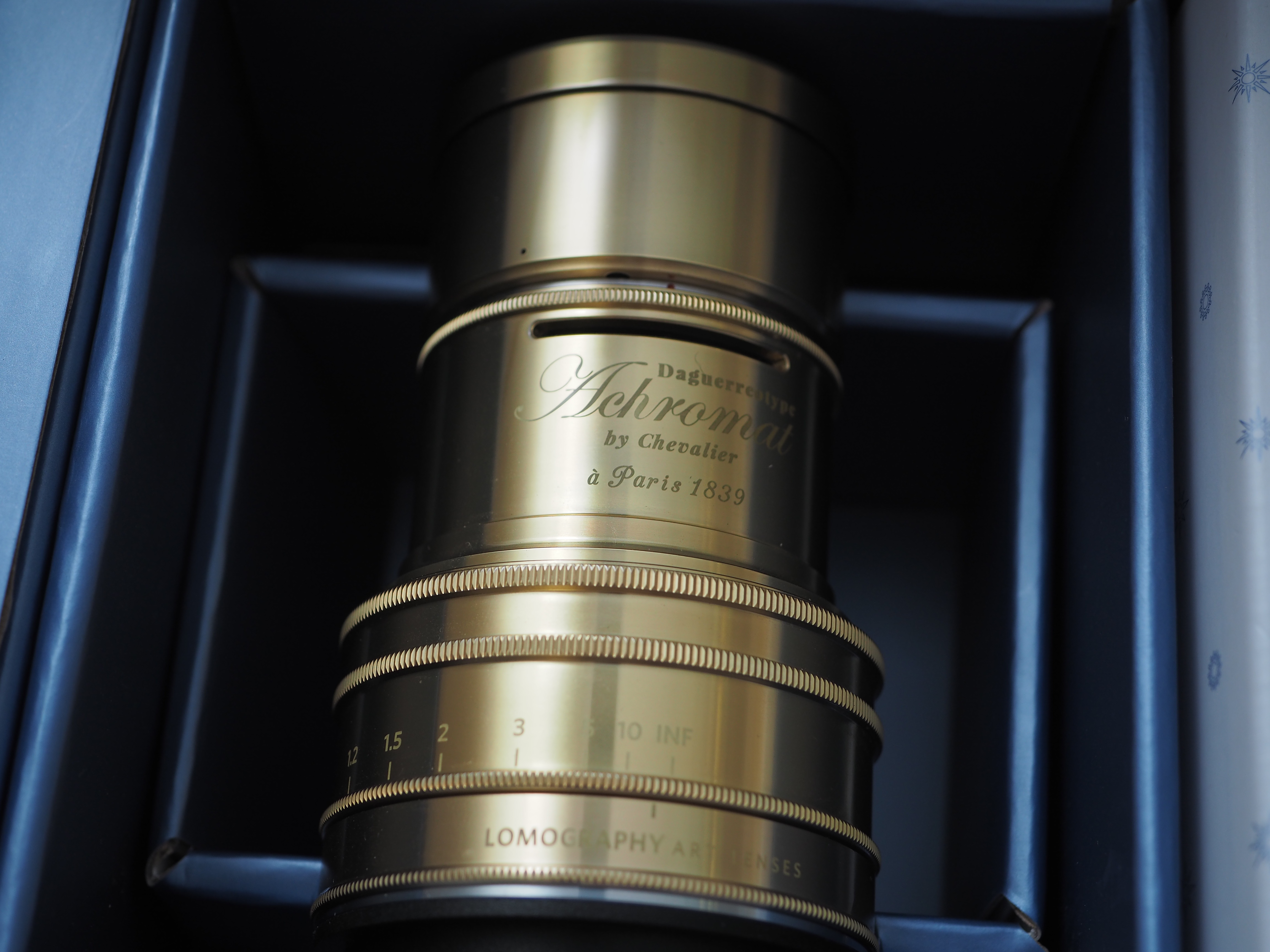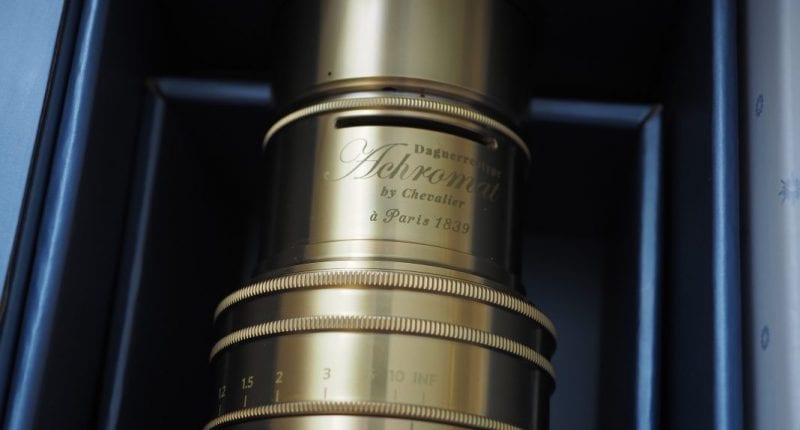
There’s something special about shooting with old or even antique cameras. There’s a certain level of craftsmanship used when making some iconic cameras and lenses (the Graflex Speed Graphic and Hasselblad 500 series come to mind) as well as the fact that they force you to be a more mindful photographer by slowing down the process. If you’ve ever been curious about what it must be like shooting with a camera of days long past, the Lomography Daguerreotype Achromat 2.9/64 is like turning your current digital camera into a portable time machine.
Technical Specifications from Lomography’s website
- Focal Length: 64mm
- Maximum Aperture: f/2.9
- Apertures: Waterhouse aperture plates, up to f/16
- Lens Mount: Canon EF
- Color: Brass (also available in Black and Gold-plated Limited Edition)
- Closest Focusing Distance: 0.5m
- Focusing Mechanism: helicoid
- Image circle: 44mm
- Field of view: 37 degrees
- Filter Thread: 40.5mm
- Electronic Contacts: No
- Construction: 2 elements in 1 group
Ergonomics and Handling
Let’s get the obvious out of the way – this is a hefty lens even by full-frame camera lens standards. While it may not look, the Achromat packs a heft that a two-element lens may seem to imply is not there. Its full metal construction is solid, and while there’s no weather sealing to speak (remember, this is a recreation of the original photographic lens), it feels of a quality that we no longer find in consumer products. Simply put, this thing felt like a tank but disguised as a Rolls Royce.

The lens itself does not have any aperture blades as you’d see in the spec sheet of most lenses you’d be familiar with, that’s because the Achromat uses a Waterhouse aperture plate system that requires you drop in a metal plate of varying f-stop sizes ranging from F/2.9 to F/16. Don’t try shooting without a plate in or you’ll get a blurry mess, but drop in one of the “art” plates in and you’ll be seeing bokeh stars – literally. The lens’s helicoid focusing mechanism provides for a smooth and accurate control when focusing; allowing you to change the focal plane in a buttery smooth, albeit slow transition from point to point. (Fun fact: helicoid focusing mechanism is a fancy way of saying the focal plane exists on two ends of a helix, similar to the way a rangefinder acquires focus).
Control wise, there’s the focus ring. That’s it. The Waterhouse aperture system negates the need for an aperture control dial (again, no aperture blades in this bad boy). The Achromat’s focus ring is everything you’d want: it’s tactile, easy to find, responsive with just enough throw between 0.5mm focus distance to infinity. If you use this lens for videography, you’ll appreciate the fact that changing up focus distances requires intent.
Image Quality
So basically, handling this lens feels very right – just the right amount of heft, simple controls, and responsive, but what about the images? Well right off the bat let’s address image sharpness – if you’re looking for tack-sharp photos with fantastic detail, this is probably not the lens for you. What the Achromat does (and does exceptionally well) is create images that have a soft, creamy, glow about them with the ability to fun bokeh effects thanks to its aperture plates. The Achromat seems purpose-built for the photographer that loves bokeh or a photographer that loves the soft, dreamlike image quality of old film. The images themselves are contrasty with excellent color rendition.
Wide open at F/2.9 you get a dreamy image that’s soft everywhere but the center. It’s reminiscent of the old wedding photographer’s trick of smearing vaseline around the edges of a lens filter to create atmosphere in their images. When you stop down past F/4, you get sharper images but sacrifice the bokeh effects of the aperture plates – which in our opinion is one of the biggest draws of this camera.
So, Should You Get One?

Do you need this lens in your gear bag; this is one of those questions that comes down to taste. The Achromat is a beautifully designed lens that’s going to get lots of looks and questions from anyone that’s nearby. At a recent event, we were stopped every few feet and had to field questions about the lens – some brave souls even requested to have their pictures taken. As its name implies, this is a lens for those looking for a more artistic ethos in their photography and aren’t necessarily pixel-peeping or requiring super-realism in the photos they make. While the Achromat has native mounts for Canon, Nikon and Pentax mounts natively; there is a breadth of available mount adapters that will allow you to shoot with this lens on your camera system of choice. The images in our sample gallery were shot with a Samsung NX1 and Olympus OM-D E-M5 Mk. II with no issues or limitations. If pushing your creativity is what you look for in a lens, the Lomography Daguerreotype Achromat 29/64 may be a must-have in your toolkit.



